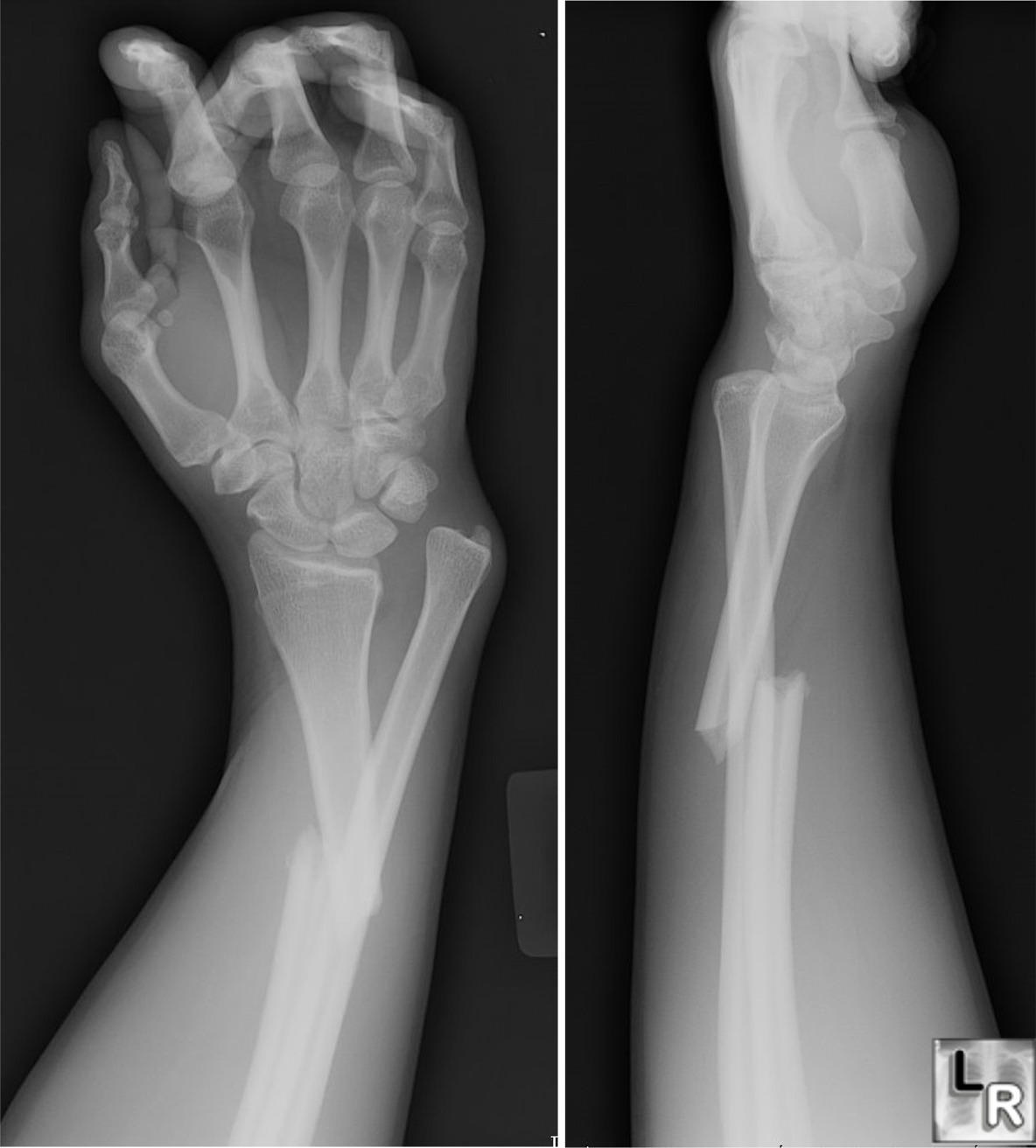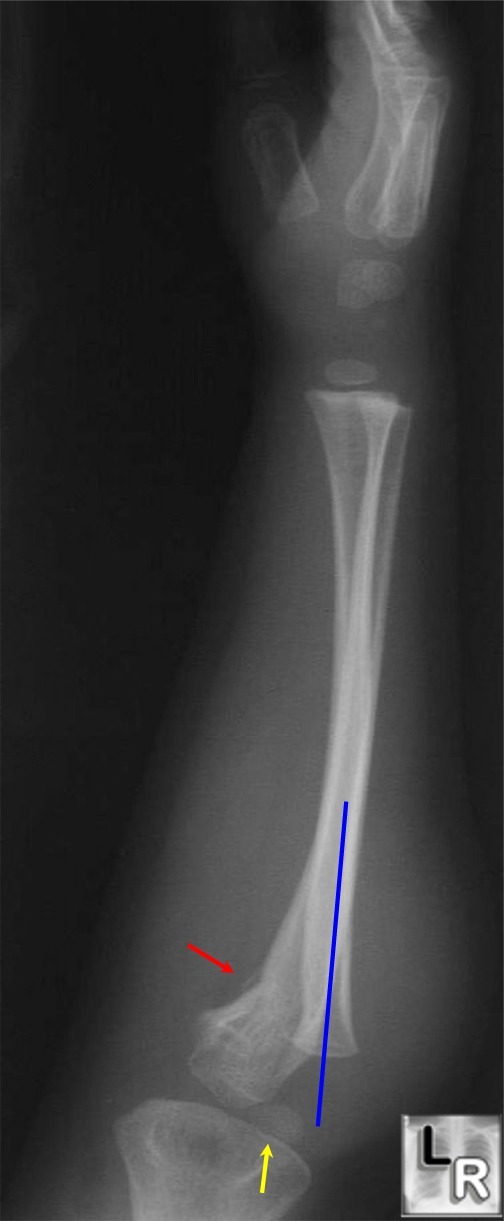|
Galeazzi and Monteggia
Fracture-Dislocations
- Whenever one of the two bones of the forearm
fractures with considerable shortening (usually through angulation), then
something has to happen to “shorten” the other bone
o
The other bone can also fracture
o
The other bone can dislocate
o
Ligaments are torn
· Galeazzi and Monteggia fractures are both
fractures in which there is a fracture with shortening of one of the two bones
of the forearm with dislocation of the other bone
· Galeazzi
Fracture
o
Mechanism: Fall on outstretched hand with elbow
flexed
o
Fracture
of the radius with shortening and dislocation of the distal ulna
o
Dorsal angulation
·
Ulnar plus variance (= radial shortening) of
>10 mm implies complete disruption of interosseous membrane means complete
instability of radioulnar joint
·
Complications of Galeazzi fracture
o
High incidence of
§
Nonunion
§
Delayed union
§
Malunion (unstable fracture)
o
Limitation of pronation or supination
·
Monteggia
Fracture
o
Mechanism: direct blow to the forearm
o
Anterior dislocation of the radial head
with a fracture of the ulna, usually angulated dorsally
o
May have associated wrist injury
·
Complications
o
Nonunion
o
Limitation of motion at elbow
o
Nerve abnormalities
·
Reverse Monteggia Fracture
o
Dorsally angulated proximal ulnar fracture and
posterior dislocation of radial head

Galeazzi fracture consists of a fracture
of the radius with angulation and
associated dislocation of the distal ulna

Monteggia fracture consists of a fracture
of the ulna (red arrow) with angulation and
associated dislocation of the radial head. A
line drawn through the shaft of the radius
(blue line)
should always intersect the capitellum, no
matter what the position of the arm
|